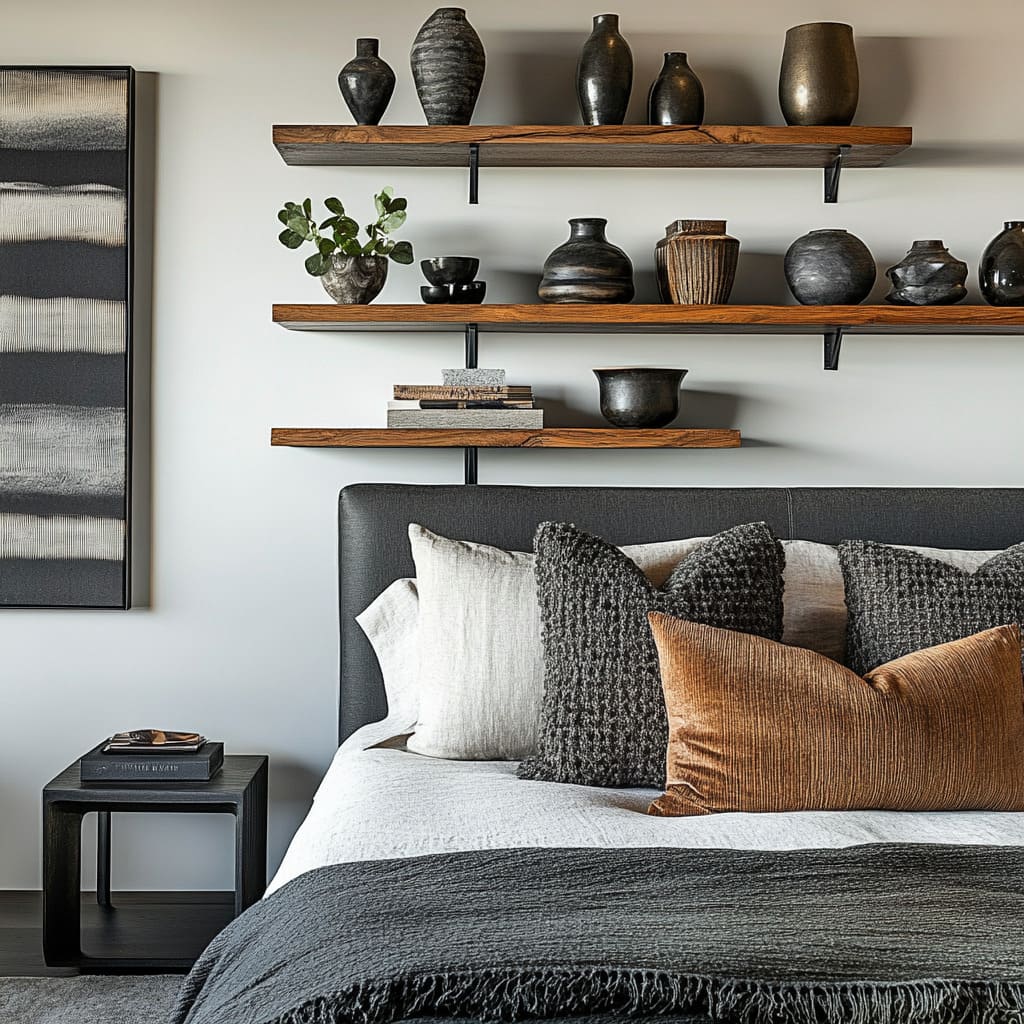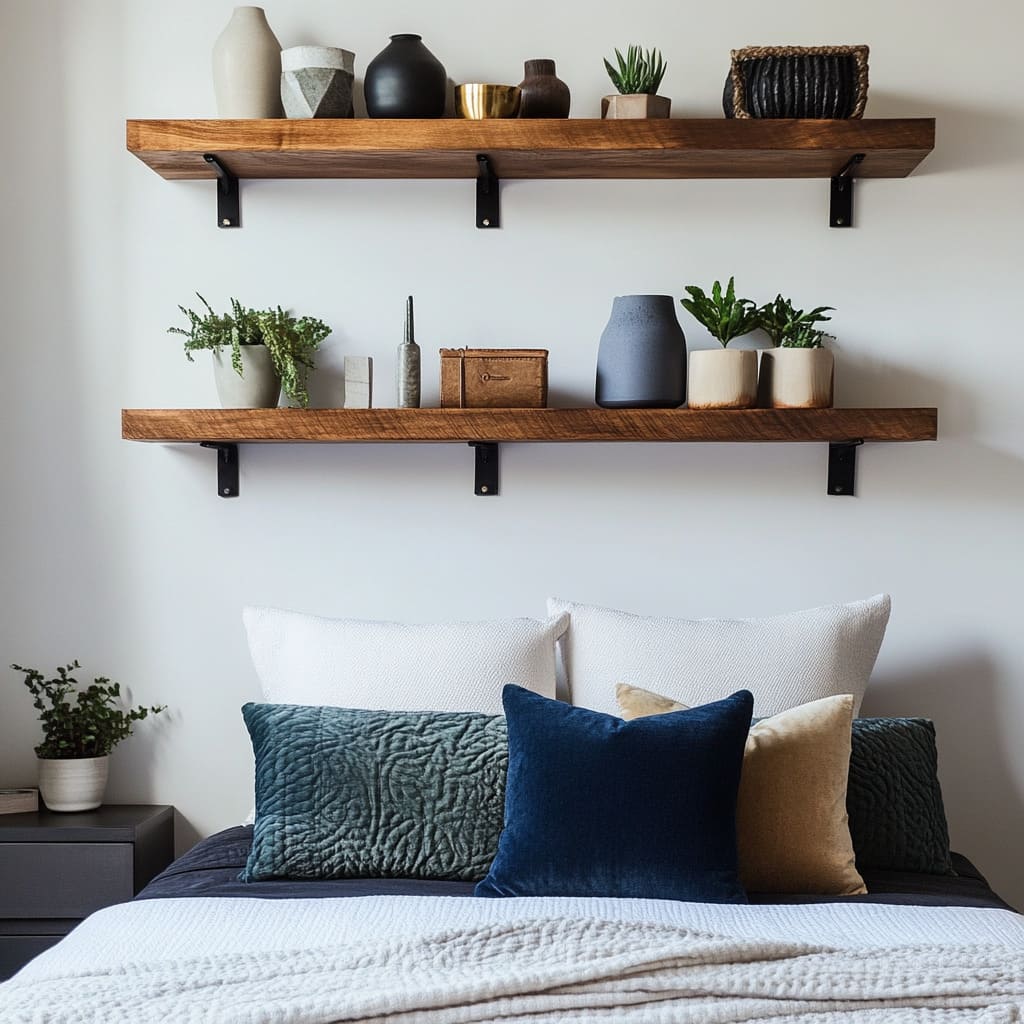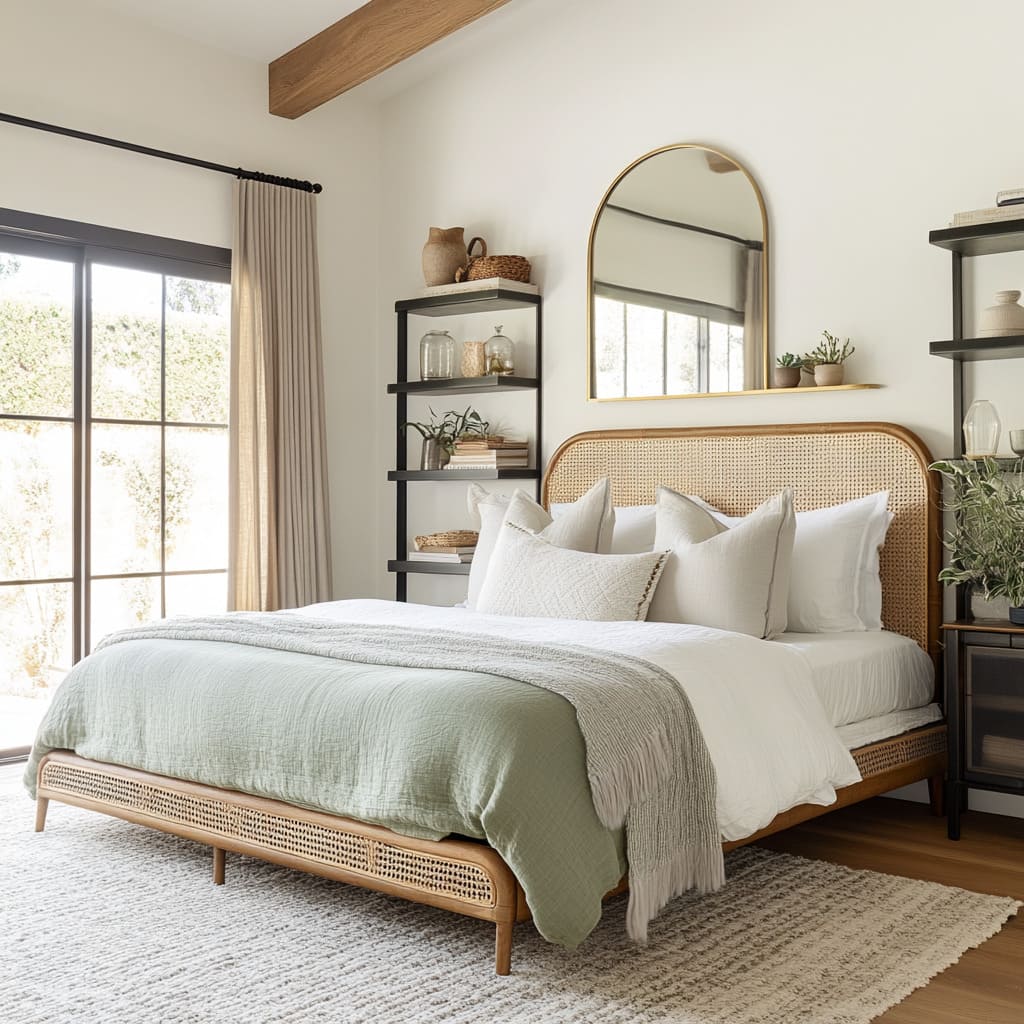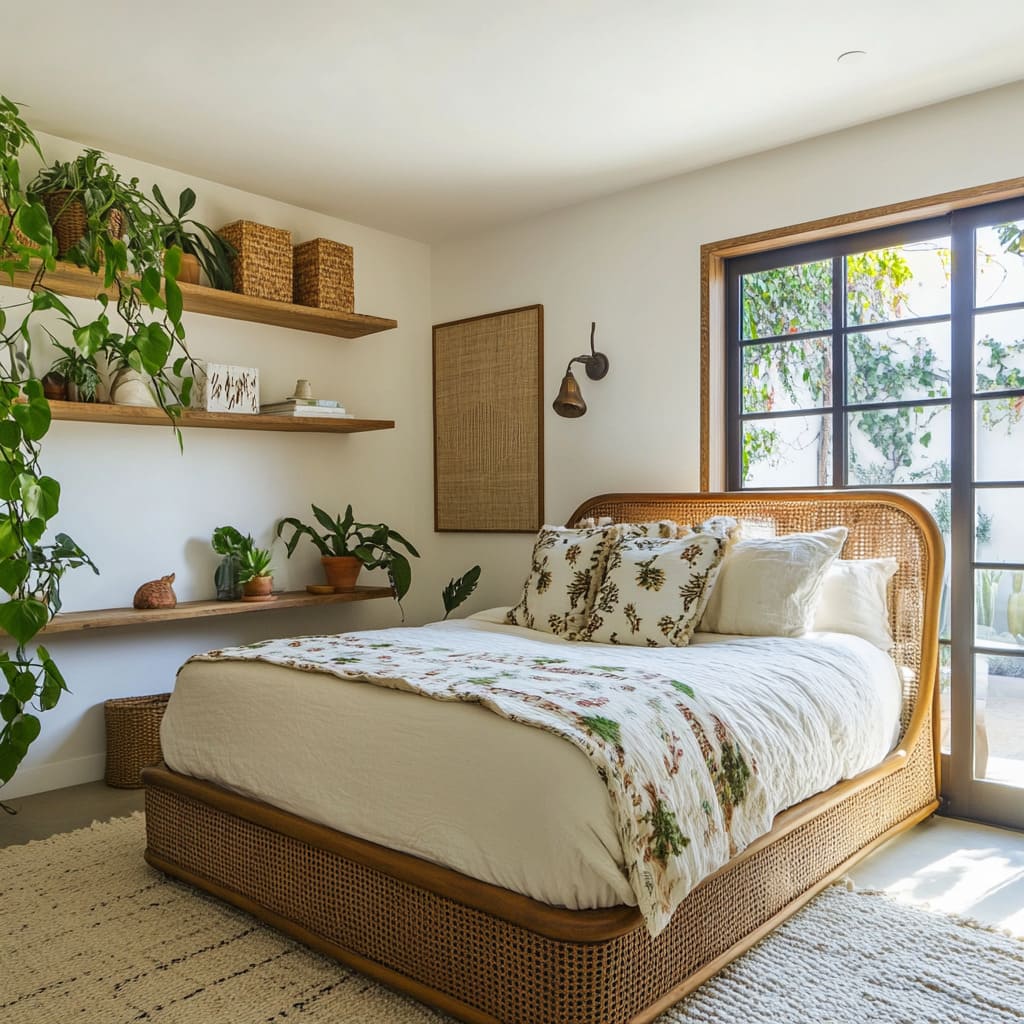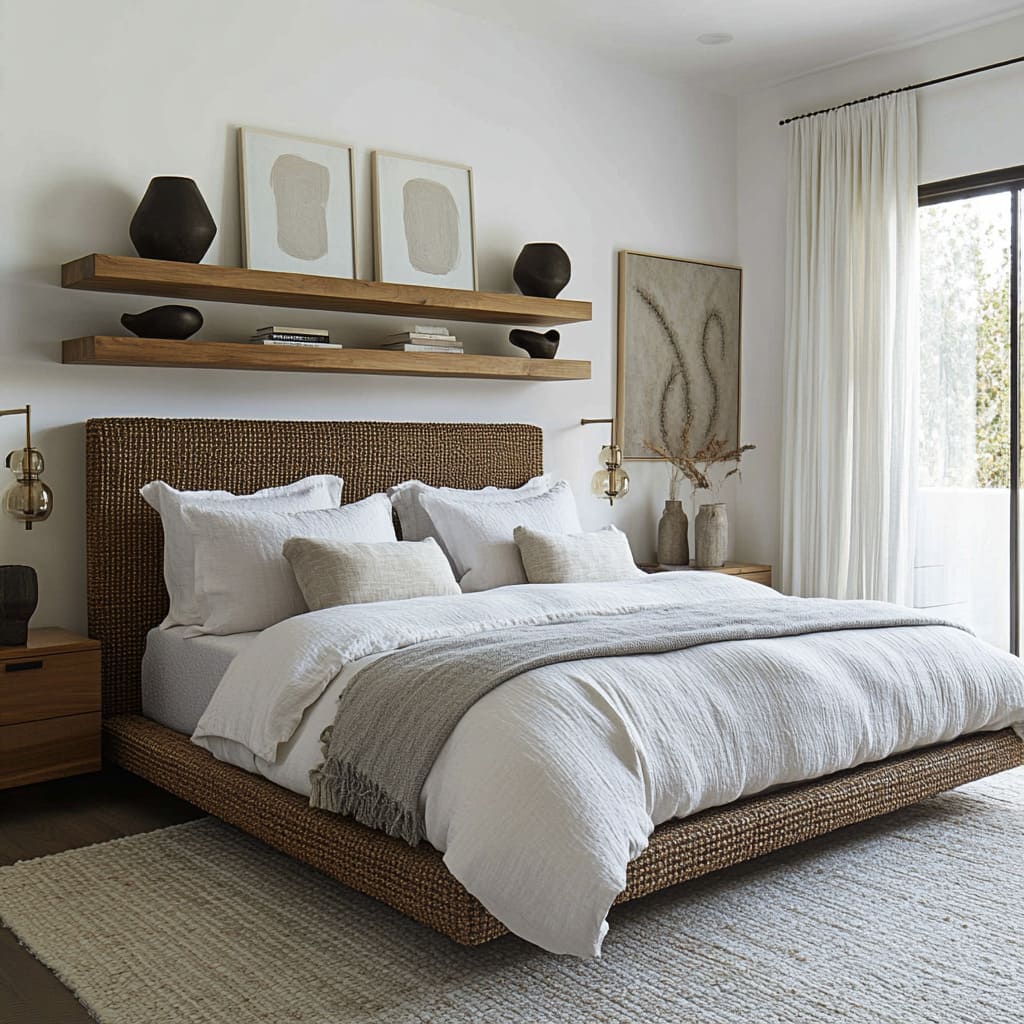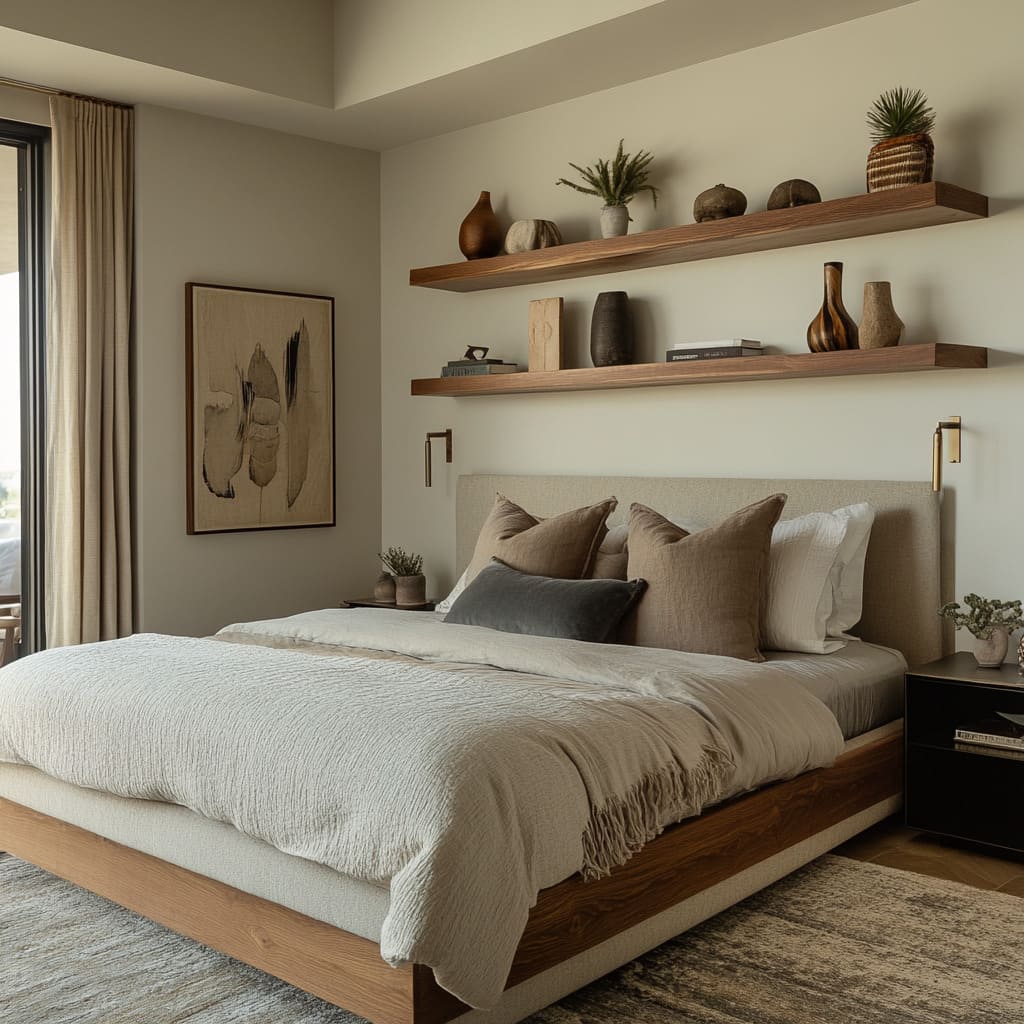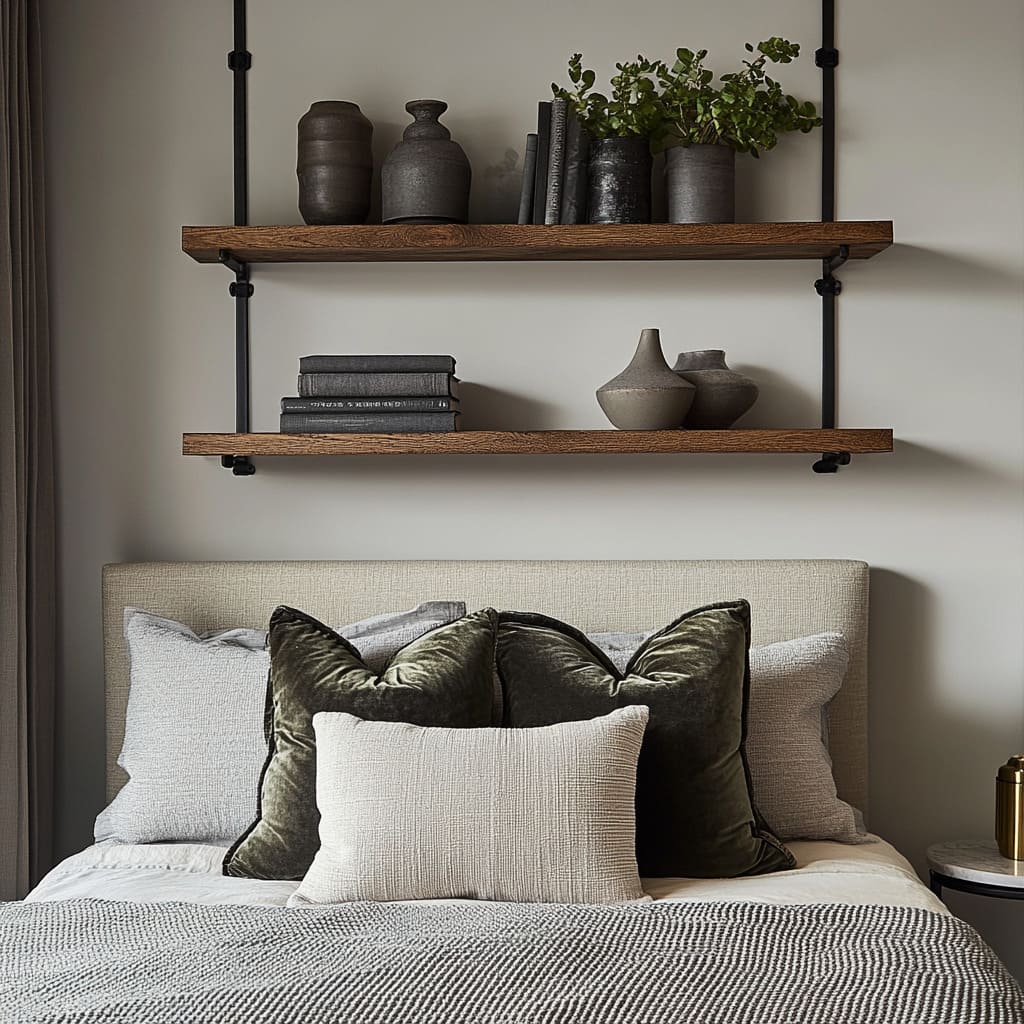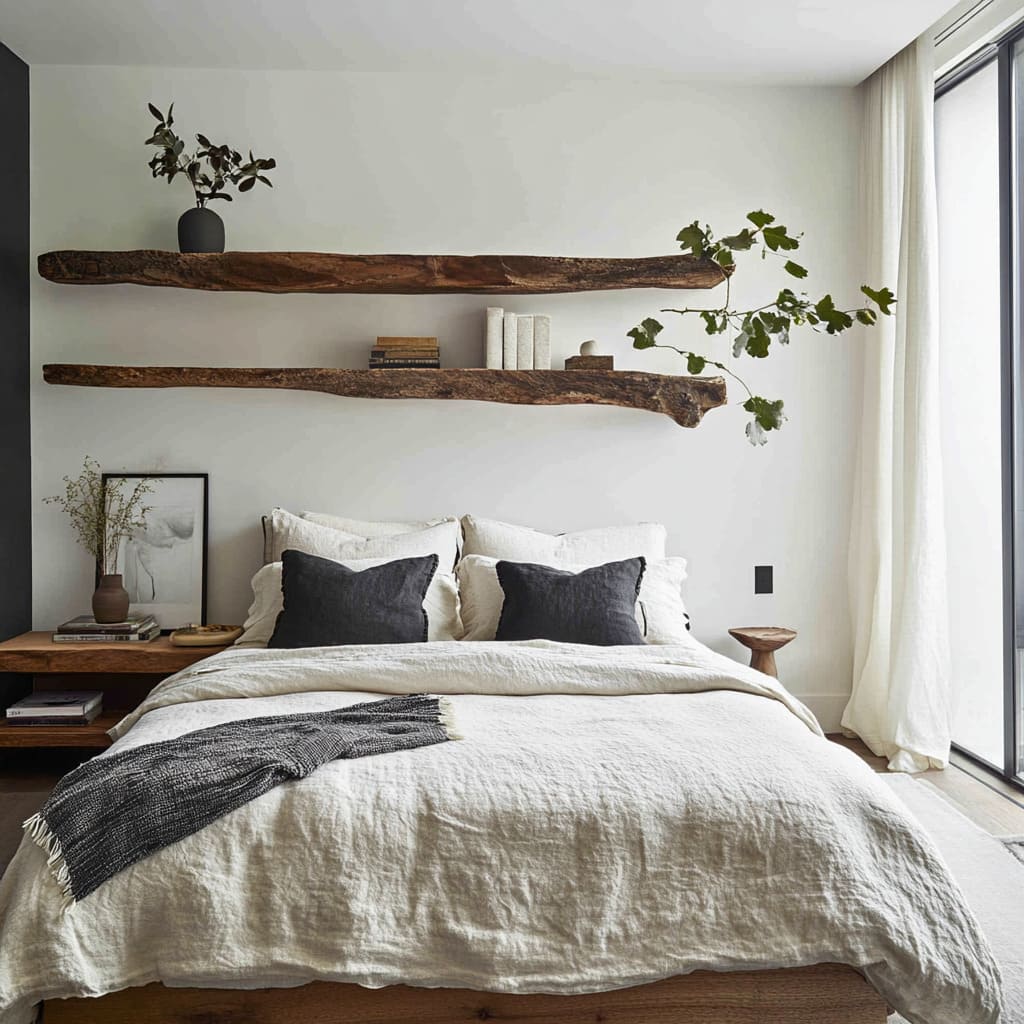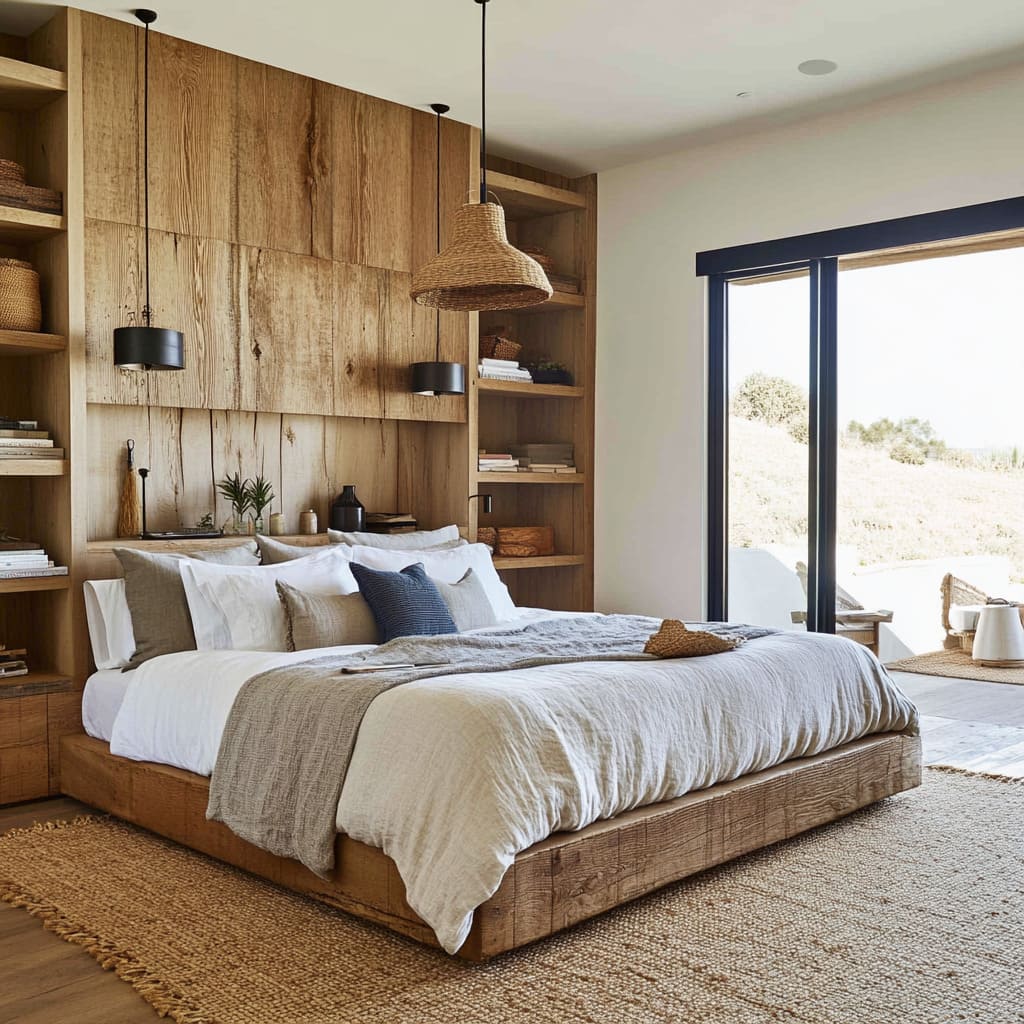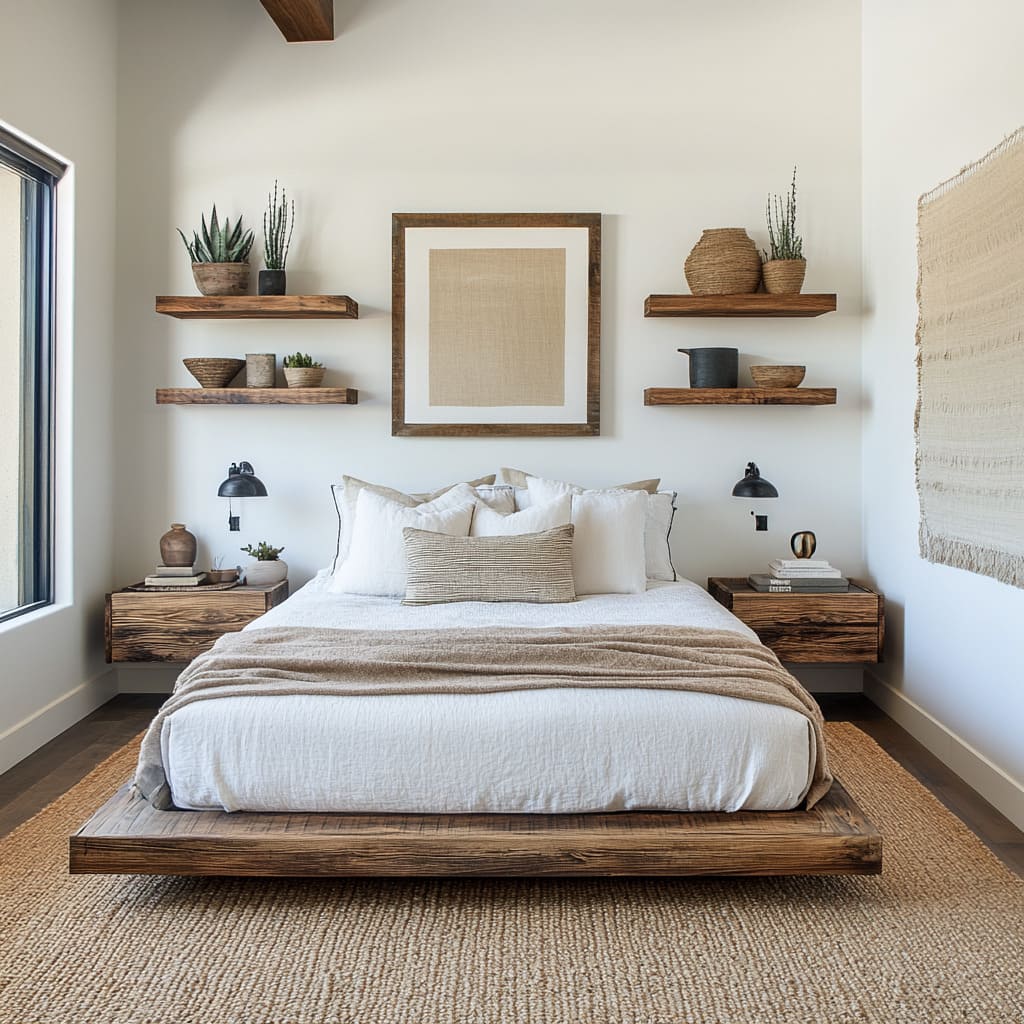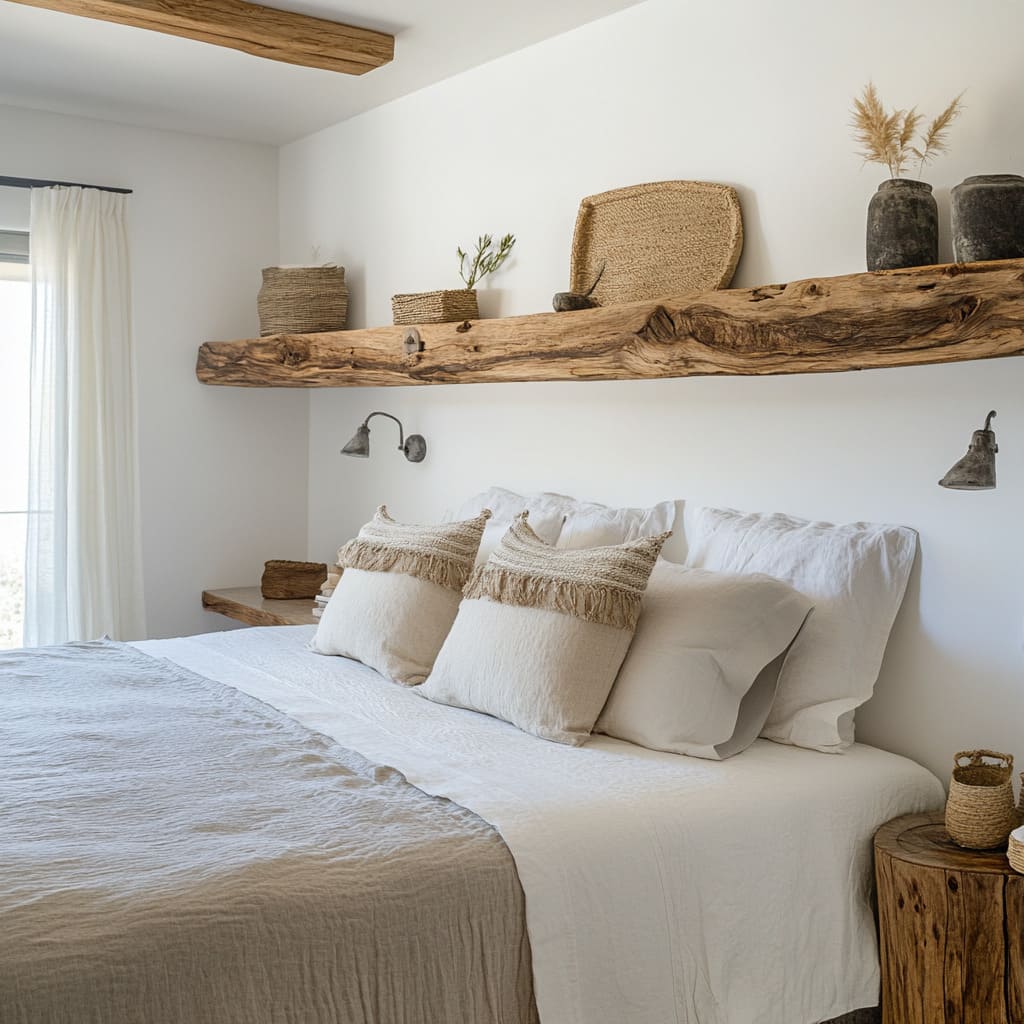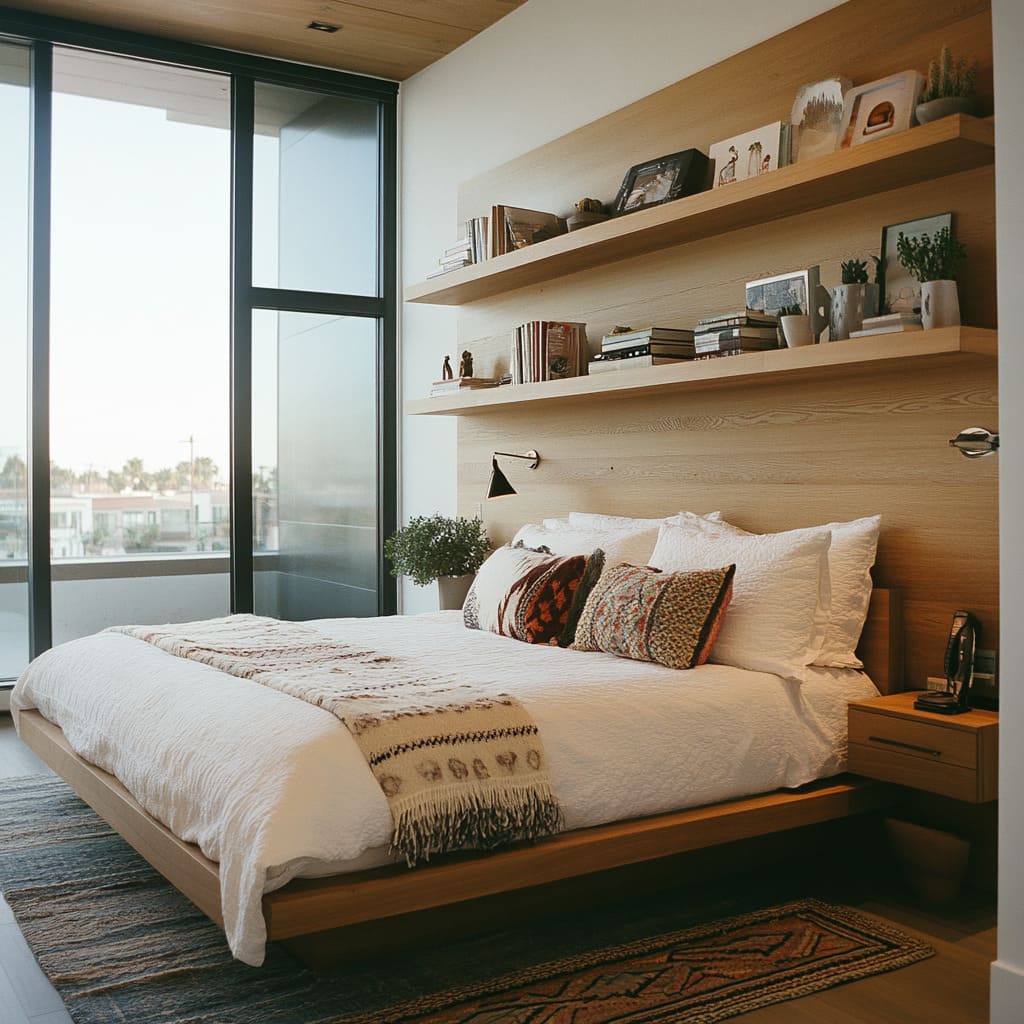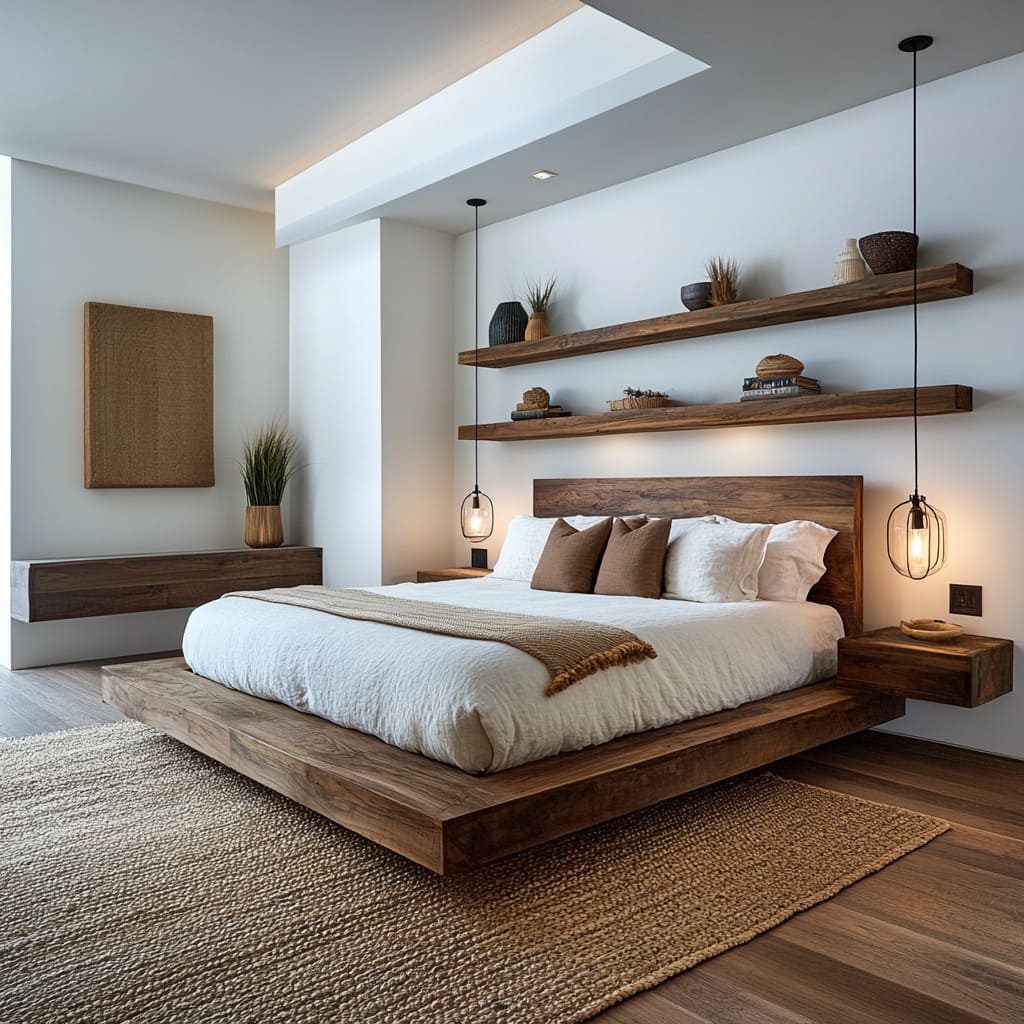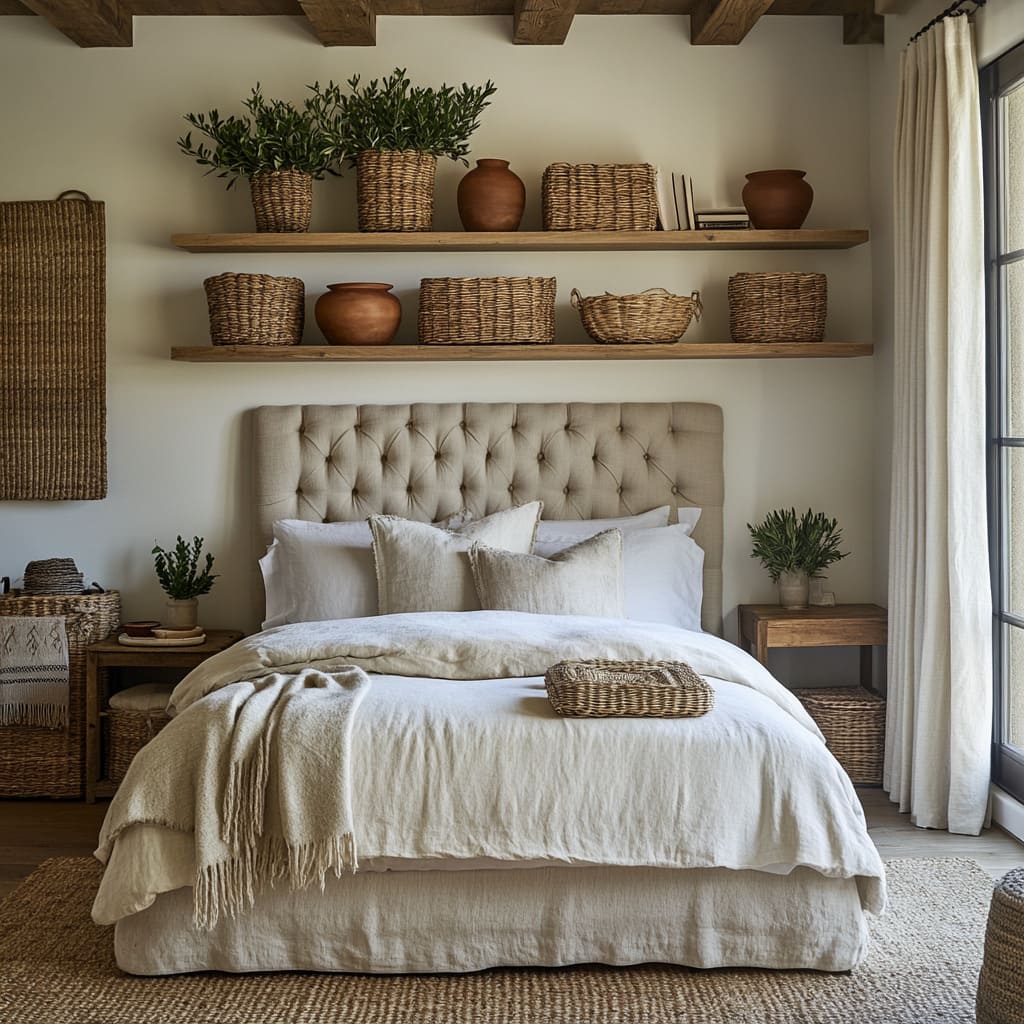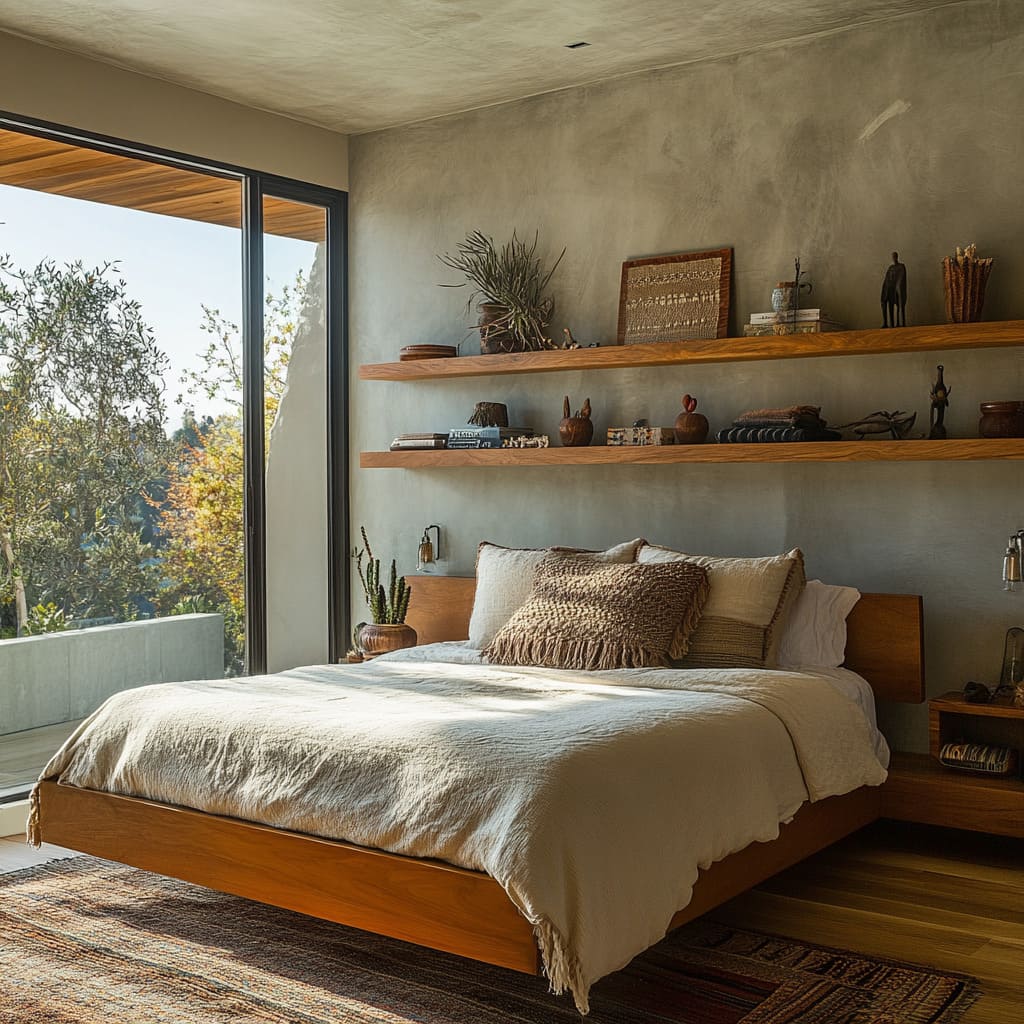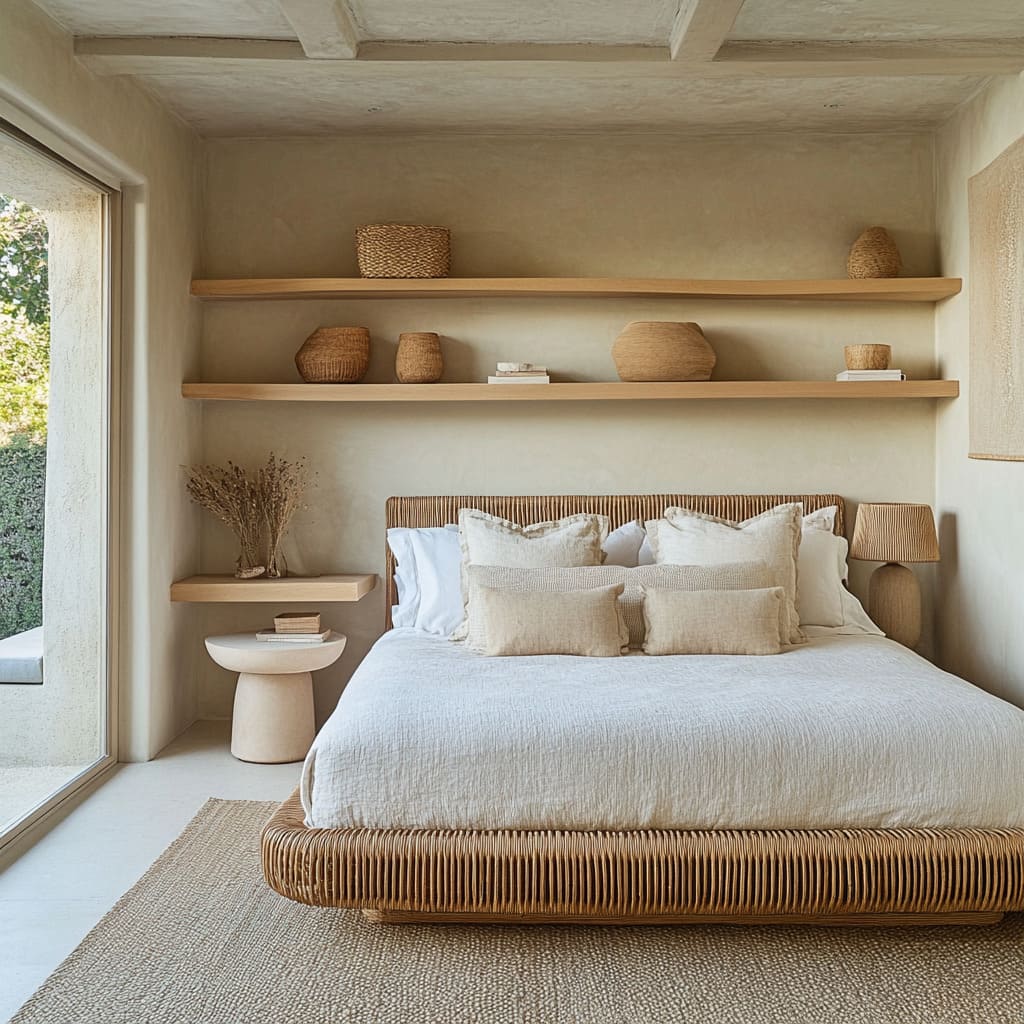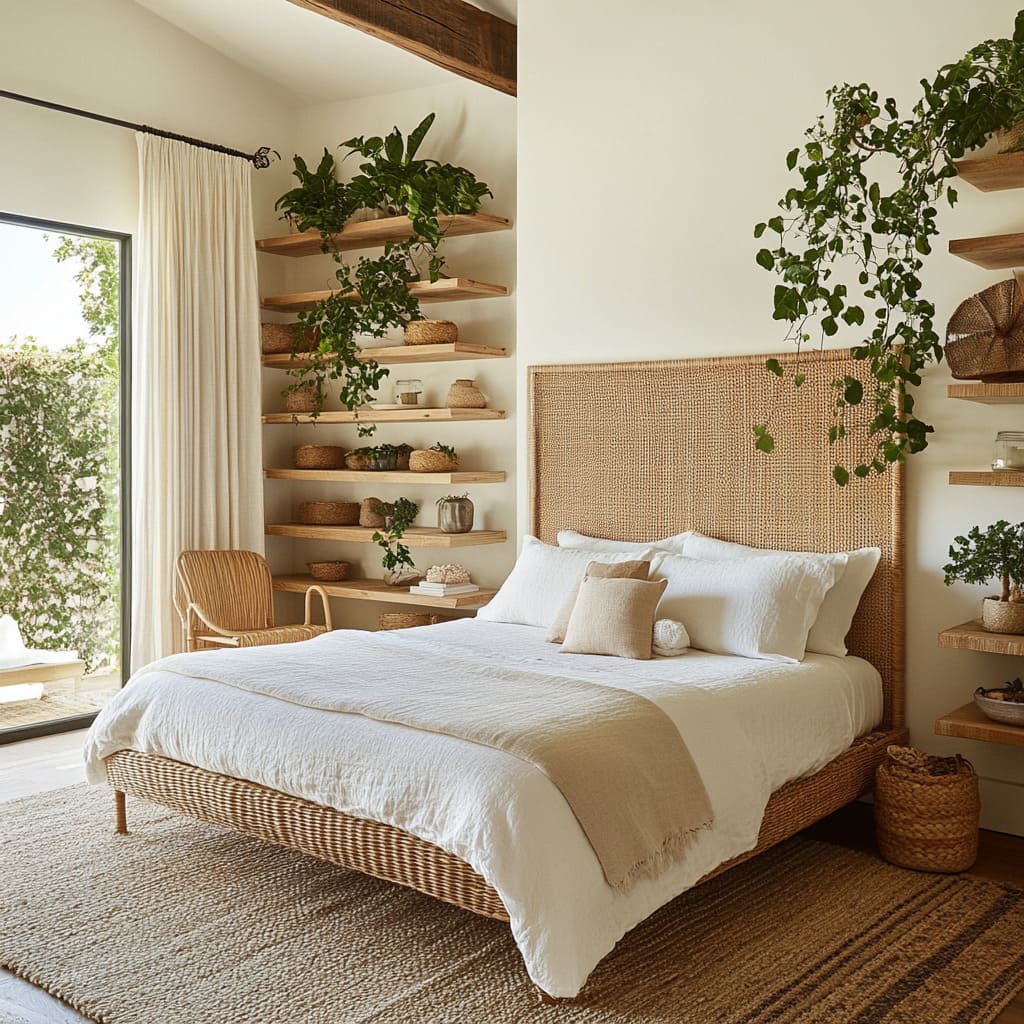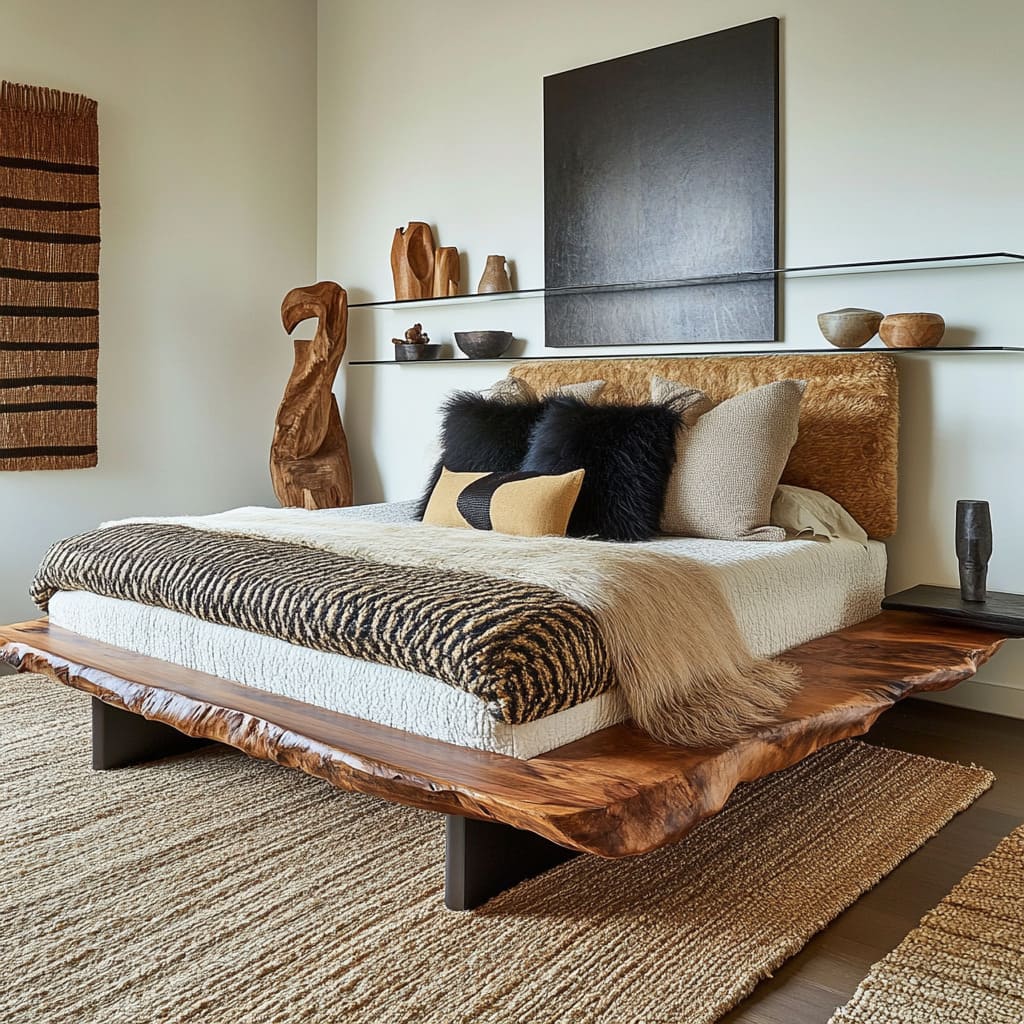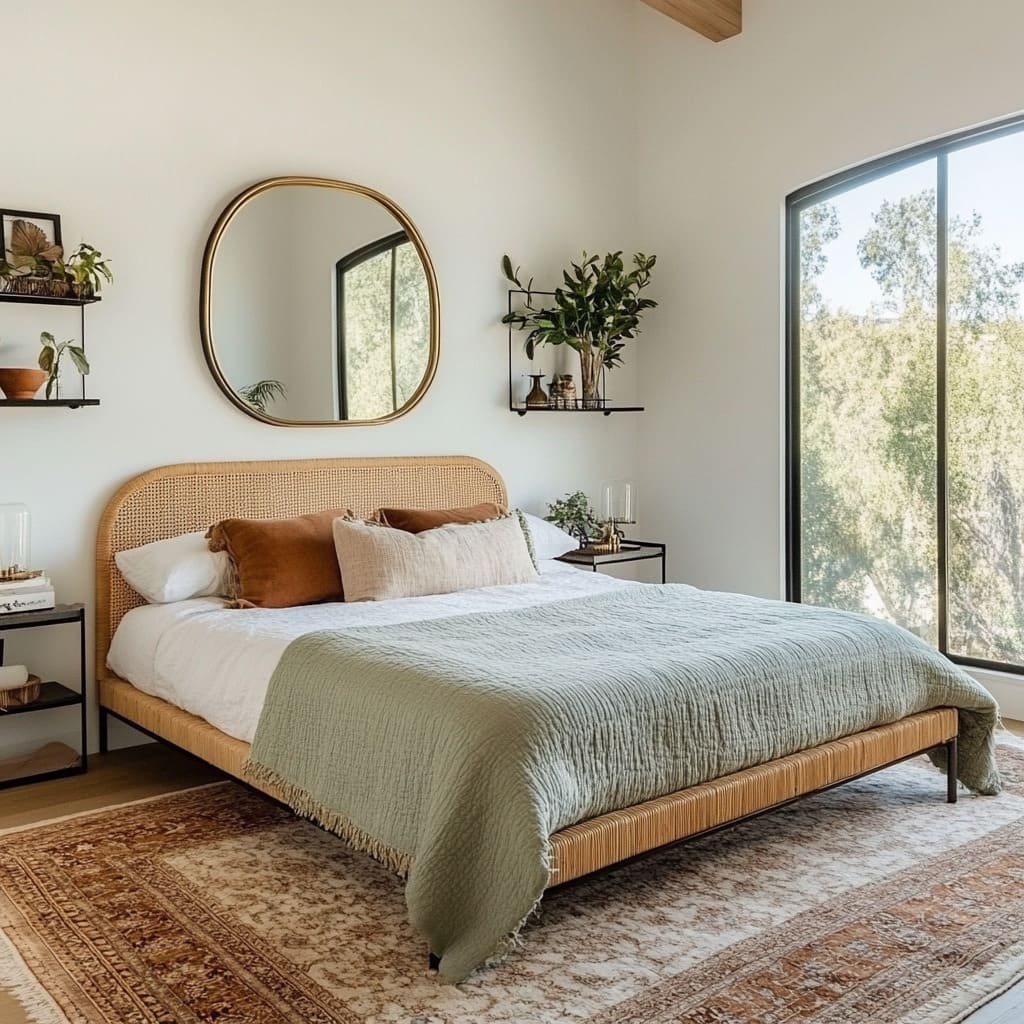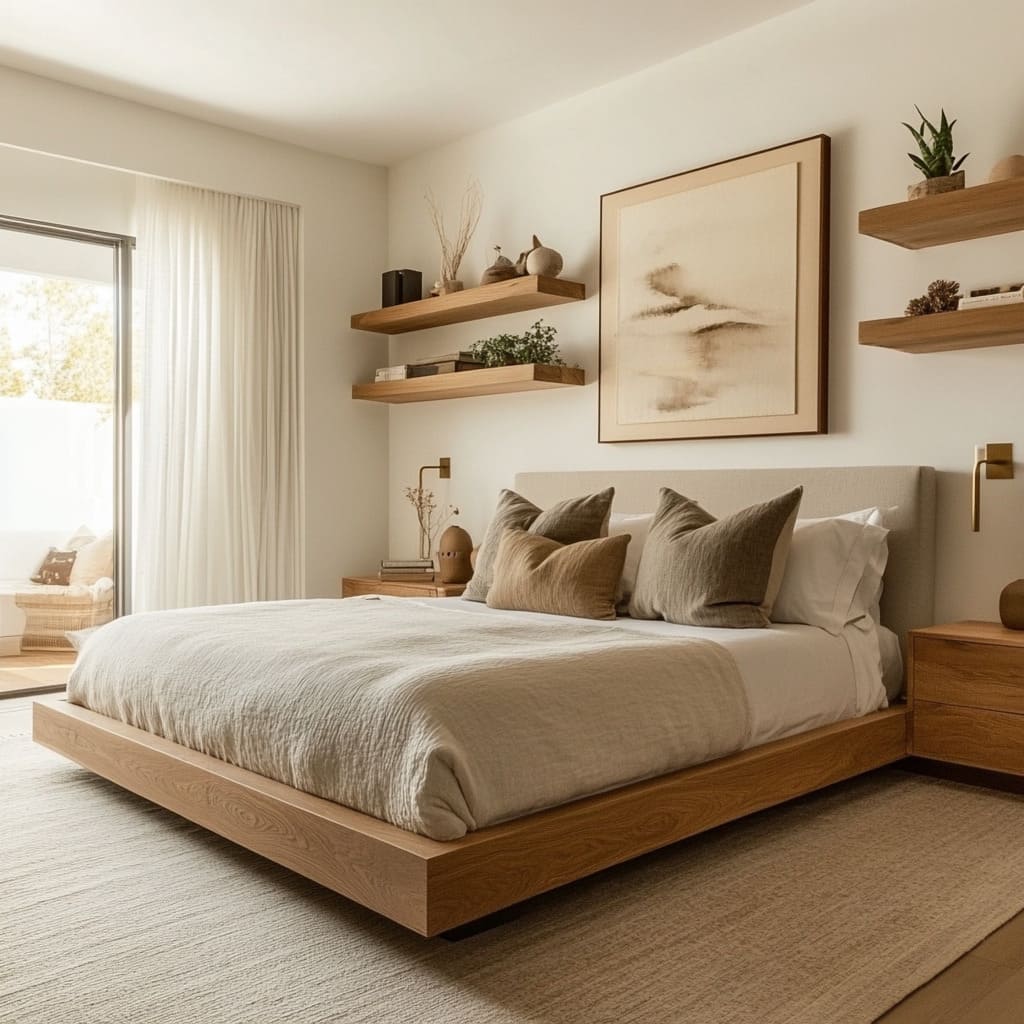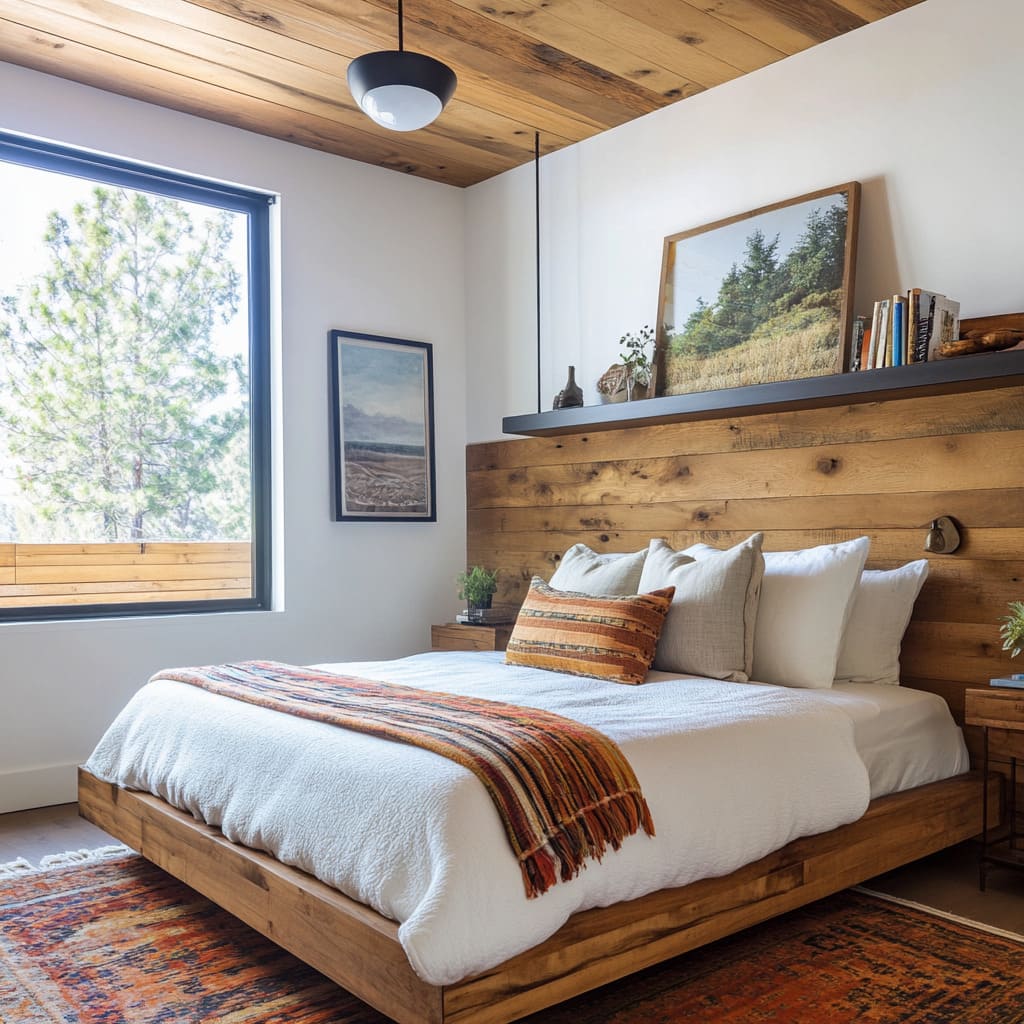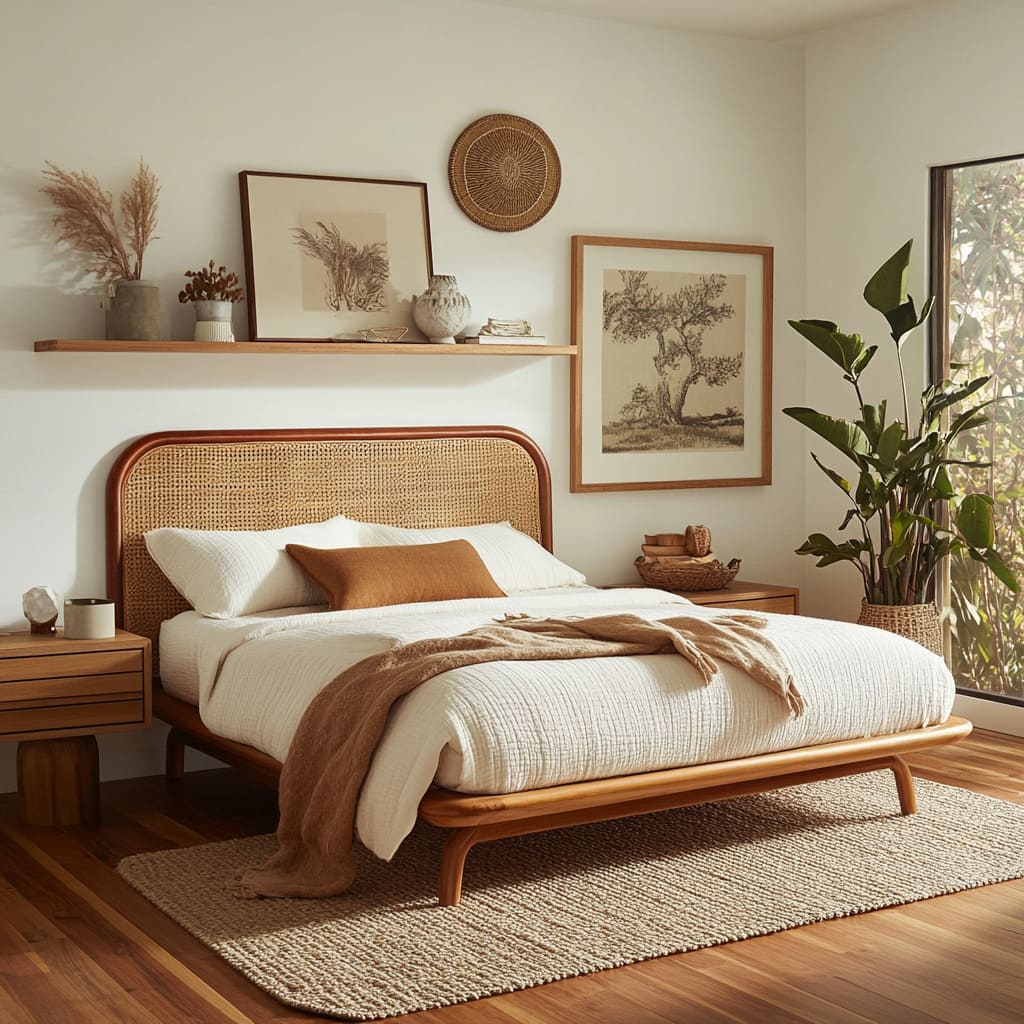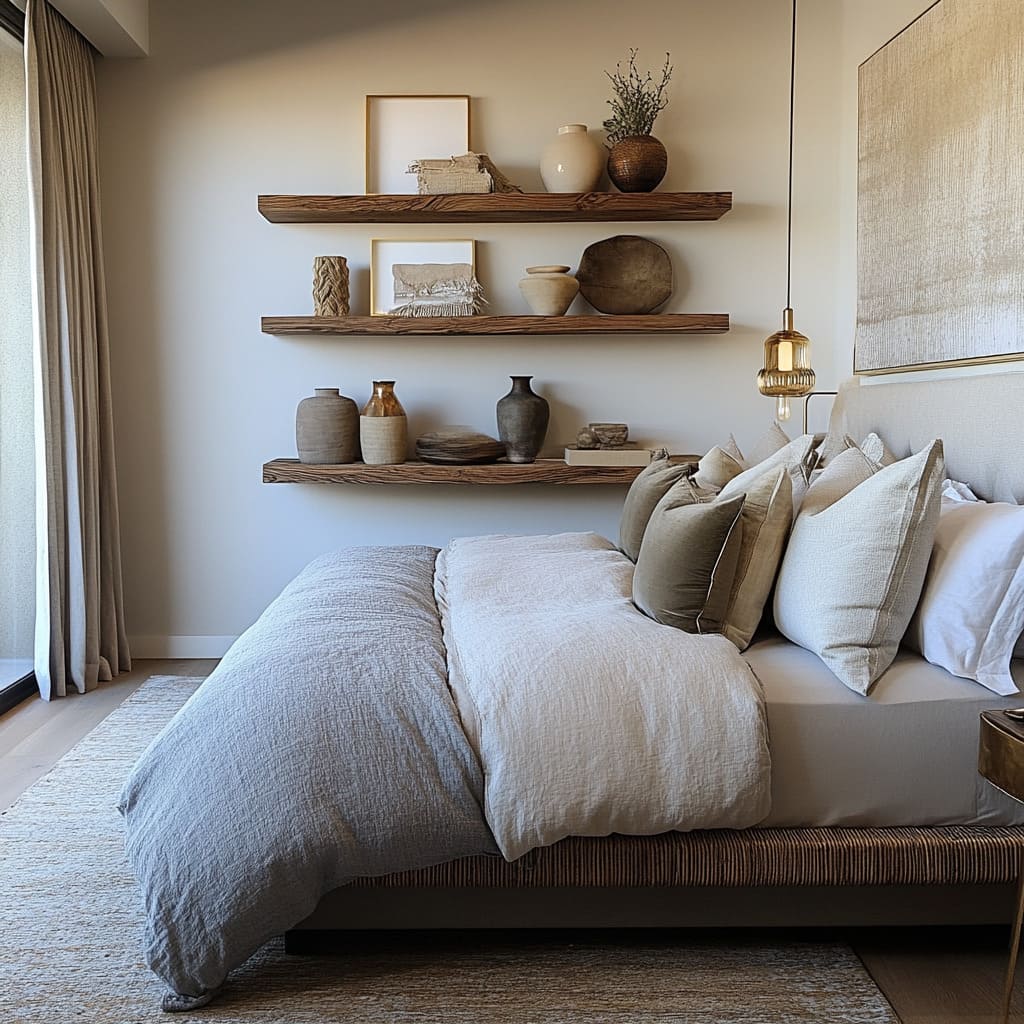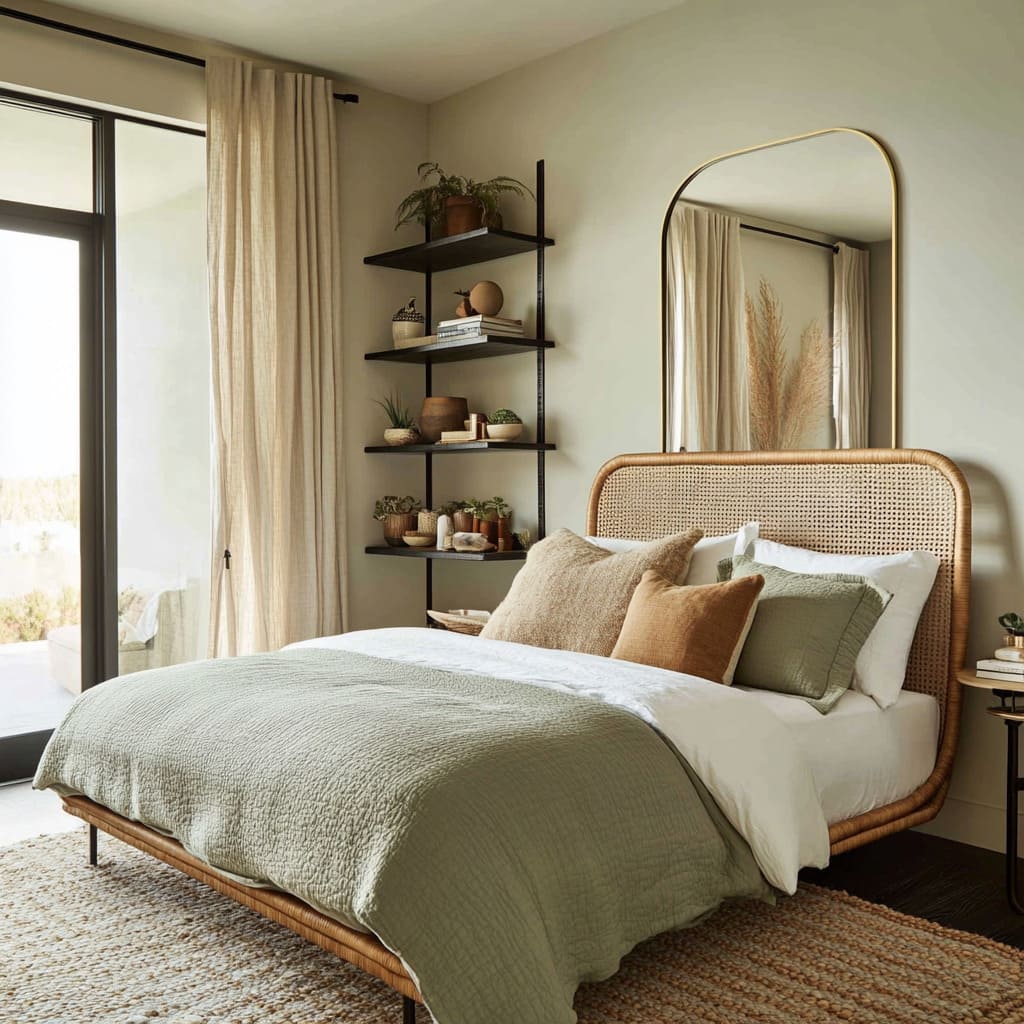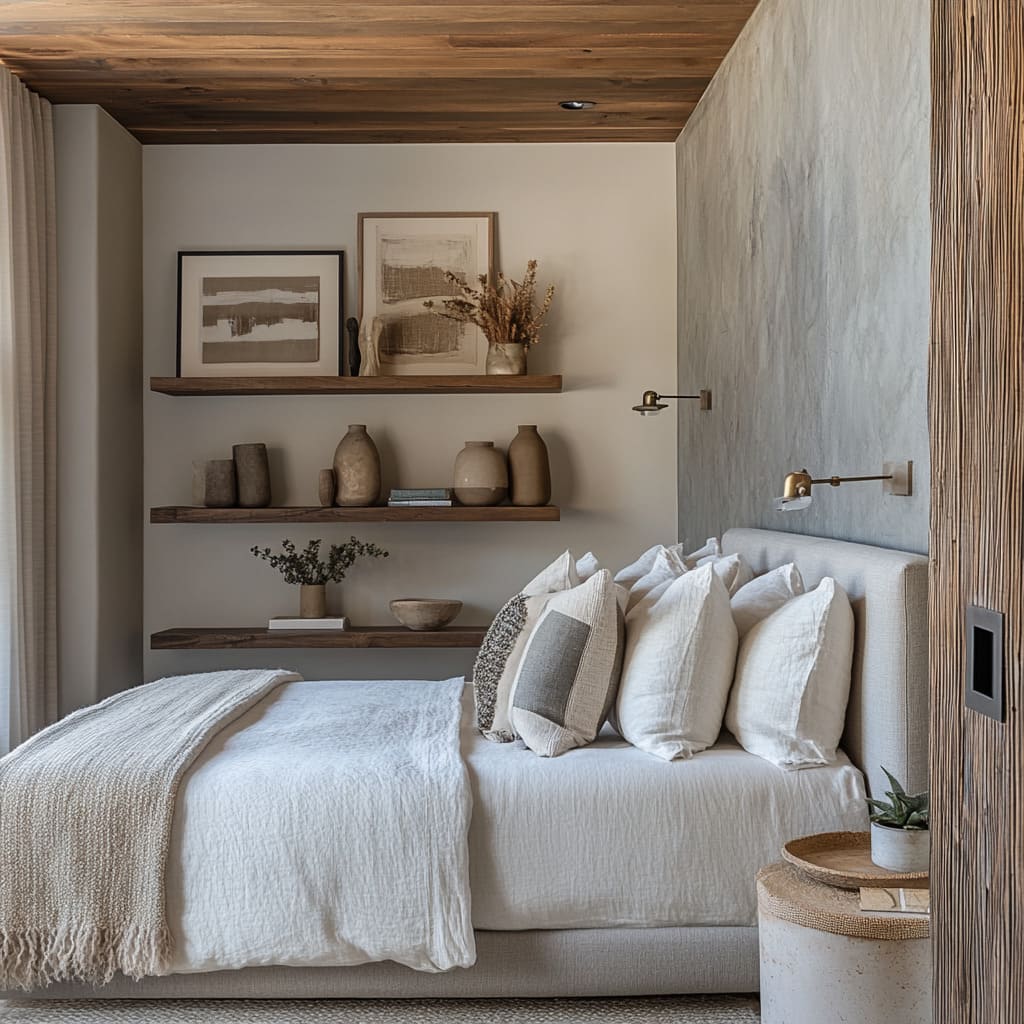In today’s world of interior design, the trend towards muted tones and natural materials has gained significant traction, especially in bedroom spaces. This design approach isn’t just about following trends; it’s about creating a living space that feels both timeless and comfortable.
By focusing on neutral colors and organic materials, designers can craft a bedroom that promotes relaxation and harmony. Muted tones—like soft beiges, gentle grays, and understated greens—have a unique ability to create a calm atmosphere.
They serve as a versatile backdrop, allowing for flexibility in other design elements. When combined with natural materials such as wood, rattan, and linen, these tones contribute to a space that feels connected to the outdoors, promoting a sense of balance
The purpose of this article is to explore how muted tones and natural materials can be thoughtfully incorporated into modern bedroom design. Through careful consideration of layout, furniture, bedding, and decor, this article will provide insights on creating a bedroom that is both functional and aesthetically pleasing
The Foundation: Layout and Structure
The Role of Layout in Modern Bedroom Design
The layout of a bedroom plays a crucial role in setting the tone for the entire space. A well-thought-out layout not only improves the room’s functionality but also enhances its overall appeal.
In modern bedroom design, an open and uncluttered layout is key. It creates a sense of spaciousness, allowing each design element to stand out without overwhelming the room.
Centering the bed within the room is a common approach in these designs. The bed often serves as the focal point, around which other elements are organized.
Placing the bed against the longest wall or near a window maximizes the flow of the room. This setup is usually complemented by minimalist nightstands or floating shelves that flank the bed, providing both functionality and symmetry
The balance between functionality and aesthetics is critical. The room should not only look good but also serve the practical needs of its occupants.
For example, ensuring that there is enough space to move around the bed, access storage, and incorporate lighting all contribute to a well-designed bedroom that doesn’t sacrifice comfort for style.
Integrating Key Design Elements
In modern bedroom design, integrating furniture and decor that complement the overall aesthetic is essential. One of the key elements often used in these designs is floating shelves.
These shelves serve a dual purpose: they provide additional storage and display space while also enhancing the room’s visual appeal. The strategic placement of floating shelves above the bed draws the eye upward, adding height and dimension to the room.
These shelves can hold a mix of functional items, like books or bedside essentials, and decorative pieces, such as framed art, small plants, or sculptural objects. This not only helps in maintaining an uncluttered look but also adds personality to the space.
Floating shelves are also versatile in their design. They can be made from wood to match the natural materials used in the room or feature metal brackets for a more industrial look.
Their minimalist design keeps the focus on the items displayed and the overall room aesthetic, making them a perfect addition to a modern bedroom.
Interested in creating an eco-friendly bedroom?
See how your budget can help you design a sustainable space with our budget calculator.
[budget_renovation_calculator]
The Heart of the Room: The Bed
Bed Frame and Headboard Materials
The bed is the central piece in any bedroom, and in modern design, the choice of materials for the bed frame and headboard is particularly important. Natural materials like wood and rattan are popular choices because of their ability to add warmth and a connection to nature.
A wooden platform bed, for example, brings a sturdy, timeless quality to the room. The grain of the wood, whether light or dark, can complement the muted tones of the bedding and walls.
Meanwhile, a rattan headboard adds texture and a hint of bohemian flair, balancing the sleek lines of modern furniture with its organic, woven pattern. These materials not only contribute to the aesthetic of the room but also offer durability and comfort.
Wood and rattan are long-lasting materials that age well, developing a patina that can add character to the space over time. The use of such materials ensures that the bed remains a central, visually pleasing element in the room’s design.
Bedding Choices: Comfort Meets Style
When it comes to bedding, the focus should be on creating a combination of comfort and style. High-quality linens in neutral tones such as whites, beiges, and grays form the foundation of a well-dressed bed.
These colors not only create a clean and inviting look but also serve as a canvas for layering additional textures and colors. Layering is key to achieving a cozy yet stylish bed.
Start with the basics—a crisp white sheet set, topped with a light duvet or quilt in a neutral color. Adding a throw blanket in a muted tone, such as a soft sage green, can introduce a subtle pop of color that remains consistent with the room’s overall palette.
Decorative pillows are another important aspect of the bedding design. Mixing pillows in different sizes and textures adds depth and interest to the bed.
For example, larger pillows in a textured fabric can be placed at the back, with smaller, more decorative pillows in front. These pillows can feature earthy tones or simple patterns that complement the bedding while adding a touch of personality to the space.
By thoughtfully selecting and layering bedding elements, the bed becomes more than just a place to sleep—it becomes a statement of style and comfort, reflecting the muted tones and natural materials that define modern bedroom design.
Calculate the cost for your kitchen renovation with our budget estimator.
It’s simple to use—just input some basic details, and you’ll get a quick estimate of the budget required
Storage Solutions: Nightstands and Shelving
The Minimalist Nightstand
In modern bedroom design, the trend towards minimalist nightstands reflects a broader desire for spaces that feel uncluttered and focused. These nightstands are not just functional; they are carefully selected to complement the overall design of the room.
The minimalist approach to nightstands involves clean lines, simple forms, and a focus on functionality without unnecessary embellishment. Materials play a crucial role in defining the style of these nightstands.
Wood is a popular choice for those seeking a warm and natural feel. A wooden nightstand, especially one with a light finish, can seamlessly blend with other natural elements in the room, such as a wooden bed frame or flooring.
The grain of the wood adds subtle texture and interest, making the piece feel grounded and connected to the space
On the other hand, metal nightstands, particularly those in black or dark finishes, add a touch of industrial edge to the room. The sleek lines and smooth surfaces of metal create a striking contrast with softer materials like bedding and rugs.
A black metal nightstand, for example, can serve as a bold accent piece while still maintaining the minimalist ethos of modern design. It’s a perfect choice for those who appreciate a more contemporary, streamlined look.
Regardless of the material, the key to choosing a minimalist nightstand is to ensure that it complements the bed’s design and fits harmoniously with the room’s overall aesthetic. The nightstand should provide just enough surface space for essentials like a lamp, a book, or a glass of water, while its design should enhance the room’s style without overpowering it
Floating Shelves as a Design Feature
Floating shelves have become a staple in modern bedroom design, valued for their ability to add both storage and style to a space. These shelves are especially effective in smaller rooms where floor space is limited, as they provide storage without taking up valuable real estate.
But beyond their practicality, floating shelves are also a key design feature that can dramatically enhance the room’s vertical interest.
The placement of floating shelves is crucial to their impact. When positioned above the bed, for instance, they draw the eye upward, creating a sense of height and making the room feel more spacious.
This arrangement also allows the shelves to serve as a focal point, bringing attention to the items displayed on them. Styling floating shelves requires a balance between functionality and aesthetics.
It’s important to mix different types of items—books, decor, and greenery—to create a layered, dynamic look. Books can be stacked horizontally or vertically, with small decor items like candles, sculptures, or picture frames interspersed to add variety.
Incorporating greenery is another effective way to bring life into the space. Potted plants, particularly those with trailing vines or interesting foliage, can soften the edges of the shelves and add a natural element that complements the room’s overall design.
For example, staggered floating shelves with a combination of small potted plants, decorative bowls, and art books not only provide storage but also add texture and color to the room. The mix of items should feel cohesive and intentional, contributing to the room’s style without making the space feel cluttered
Lighting: Creating Ambiance
Natural Light as a Design Element
Natural light is a vital component in modern bedroom design, greatly influencing the room’s atmosphere and appearance. Large windows are often a focal point in such designs, inviting ample daylight to flood the space and highlighting the room’s architectural features and decor.
The quality and direction of natural light can transform a room, making it feel more open, warm, and inviting.
When it comes to window treatments, the goal is to enhance natural light while also providing privacy. Floor-to-ceiling drapes in soft, neutral tones are a popular choice, as they diffuse sunlight gently across the room, creating a warm and inviting glow.
These drapes add a touch of elegance and softness to the space, complementing the minimalist design while allowing the beauty of natural light to take center stage. For those who prefer a bit more control over the light, layered window treatments can be used.
A combination of sheer curtains and heavier drapes allows for flexibility, offering options for full sunlight, diffused light, or complete privacy, depending on the time of day or the desired mood
Layered Lighting Solutions
Beyond natural light, a well-designed bedroom requires a thoughtful mix of artificial lighting to create the right ambiance. Layered lighting involves combining ambient, task, and accent lighting to ensure the room is both functional and inviting.
Ambient lighting, often provided by ceiling fixtures or recessed lights, offers general illumination for the entire room. This base layer of light should be soft and even, providing sufficient brightness without harshness.
Dimmer switches are an excellent addition, allowing for adjustable light levels to suit different times of day or activities. Task lighting is more focused and is used in areas where specific activities, like reading or getting dressed, take place.
Bedside lamps or wall-mounted reading lights are essential for providing adequate light for these tasks while also contributing to the room’s decor. Pendant lights above the nightstands are another modern choice, offering both functionality and a stylish design element.
These lights can be chosen to complement the room’s overall style, whether that be sleek and modern or more rustic and industrial
Accent lighting, the final layer, is used to highlight specific areas or features of the room. This could include integrated lighting within floating shelves to illuminate decor or art, or even a well-placed floor lamp that adds both light and a sculptural element to the space.
By combining these different types of lighting, the room can adapt to various moods and functions, ensuring it is as practical as it is beautiful.
Color Palette: Embracing Muted Tones
The Calmness of Neutral Shades
The use of muted tones like beiges, whites, and earthy browns plays a crucial role in creating a calm and cohesive bedroom environment. These colors act as a soothing backdrop, allowing other design elements to stand out while promoting a sense of relaxation and comfort.
Neutral shades are versatile and timeless, making them a popular choice for those seeking a bedroom that feels both modern and enduring. The psychological impact of these colors cannot be overstated.
Soft, neutral tones are known to reduce stress and create a peaceful atmosphere, which is particularly important in a bedroom setting. These colors reflect natural light beautifully, enhancing the room’s openness and making it feel more spacious and serene.
For example, a room painted in a soft beige or off-white can make the space feel light and airy, while still providing enough warmth to prevent it from feeling sterile. The addition of wooden elements, whether in furniture or decor, further enhances this effect, adding depth and texture to the room without disrupting the overall calmness
Subtle Pops of Color
While neutral tones dominate, adding subtle pops of color can bring life and interest to the space without overwhelming it. Nature-inspired colors like muted greens and rusts are perfect for this purpose, as they harmonize with the neutral palette while adding a touch of personality.
These colors can be introduced through accessories like throw pillows, blankets, or even artwork. For example, a sage green quilt at the foot of the bed can introduce a gentle splash of color that enhances the room’s connection to nature.
Similarly, a rust-colored pillow can add warmth and contrast to a bed dressed in neutral linens, creating a focal point that draws the eye without disrupting the room’s overall harmony.
The key is to use these colors sparingly and thoughtfully, ensuring they complement rather than compete with the room’s primary palette. By doing so, the space remains cohesive and visually pleasing, while still offering enough variety to feel dynamic and engaging.
This approach to color and lighting in modern bedroom design emphasizes the importance of subtlety and balance, ensuring that the room feels both calming and visually interesting.
Materials: The Essence of Natural Beauty
The Warmth of Wood
Wood is a cornerstone of modern bedroom design, valued for its ability to bring warmth, character, and a sense of grounding to a space. Its versatility allows it to be used in various aspects of the room, from flooring to furniture to decor, creating a cohesive and inviting atmosphere.
When it comes to flooring, natural wood is often the preferred choice due to its timeless appeal and the rich texture it brings to a room. Light wood flooring, in particular, is popular in contemporary design because it enhances the room’s sense of openness and brightness.
The subtle grain patterns and natural variations in color add visual interest, making the floor not just a backdrop but a feature in its own right. A light wood floor serves as a neutral base that harmonizes with a variety of other materials and colors, making it easy to create a balanced and integrated design
Furniture made from wood further enhances the room’s natural aesthetic. A wooden bed frame, for instance, can serve as a focal point that anchors the room’s design.
The choice of wood finish is crucial in highlighting the material’s natural beauty. Opting for finishes that preserve the wood’s grain and texture—rather than covering it with heavy stains or paint—allows the material to shine.
This approach not only showcases the craftsmanship of the piece but also brings a tactile element to the room, making it feel more connected to the natural world. Beyond flooring and furniture, wood can be used in smaller decorative elements to tie the room together.
Wooden frames for artwork, small wooden sculptures, or even functional items like trays and shelves can introduce subtle accents that echo the room’s overall design theme. The key is to choose pieces that complement the larger elements in the room without overwhelming them, creating a harmonious balance that is pleasing to the eye and soothing to the senses.
The Organic Appeal of Rattan and Woven Textiles
In addition to wood, materials like rattan and woven textiles are increasingly popular in modern bedroom design, bringing an organic, bohemian touch that softens the space and adds layers of texture. These materials are celebrated for their natural, hand-crafted feel, which contrasts beautifully with the clean lines and minimalist forms of contemporary furniture.
Rattan, with its light, airy structure, is often used in furniture like headboards, chairs, and accent pieces. A rattan headboard, for example, introduces a textured, natural element that immediately warms up the room.
Its woven design adds visual interest without being overly ornate, making it a perfect fit for modern spaces that value simplicity and functionality. The use of rattan not only adds a tactile quality to the room but also reinforces the connection to nature that is central to this design style
Woven textiles, such as throws, rugs, and cushions, bring additional layers of comfort and warmth to the bedroom. These textiles can be made from materials like cotton, jute, or wool, each offering its unique texture and appeal.
A woven rug, for instance, can serve as both a visual and tactile foundation for the room, adding depth and coziness. The patterns and textures of these textiles provide a contrast to the smoother surfaces of wood and metal, creating a balanced and inviting space.
Woven baskets are another practical yet stylish way to incorporate these materials into the room. Placed under nightstands, at the foot of the bed, or on open shelves, they offer a convenient storage solution that also enhances the room’s natural aesthetic.
The key to using rattan and woven textiles effectively is to ensure they complement rather than compete with other elements in the room, adding to the overall harmony and comfort of the space.
Decorative Elements: Personalizing the Space
Incorporating Greenery
Adding greenery to a bedroom is one of the simplest yet most effective ways to bring life and freshness into the space. Plants not only enhance the room’s aesthetic but also contribute to a healthier indoor environment by improving air quality.
In modern bedroom design, the use of plants is about more than just decoration; it’s about creating a living space that feels connected to nature.
When selecting plants for a bedroom, it’s important to consider the light conditions and the size of the space. Low-maintenance plants like snake plants, pothos, or succulents are ideal for bedrooms because they thrive in a range of light levels and require minimal care.
These plants can be placed on floating shelves, nightstands, or window sills, where they add color and texture without taking up too much space. Larger plants, such as fiddle leaf figs or monstera, can be placed in corners or next to windows to create a focal point.
The choice of plant pot is also important; neutral-toned pots or baskets made from natural materials like clay or wicker can enhance the organic feel of the room and complement other design elements.
Art and Accessories
Art and accessories are the finishing touches that bring personality and style to a bedroom. In a space that emphasizes muted tones and natural materials, the choice of art and accessories should reflect the overall design ethos—simple, elegant, and connected to the natural world.
When selecting art for a bedroom, consider pieces that use a neutral or earth-toned palette. Abstract art, with its focus on form and color over representational detail, can be particularly effective in modern bedrooms.
These pieces can add a sophisticated touch without overwhelming the room’s serene atmosphere. Framed botanical prints or landscapes are also great choices, reinforcing the connection to nature that is central to this design approach
Accessories should be chosen with the same level of care, ensuring they enhance the room’s aesthetic without adding clutter. This could include items like textured throw blankets, ceramic vases, or decorative bowls.
The key is to maintain a balance between functionality and beauty, with each accessory serving a purpose while also contributing to the room’s overall look. By incorporating these natural materials and thoughtful decorative elements, the bedroom becomes more than just a place to sleep; it becomes a reflection of personal style and a sanctuary from the outside world.
Final Touches: The Power of Accessories
The Subtle Impact of Accessories
In the world of modern bedroom design, accessories hold significant power in shaping the overall feel of a space. When chosen thoughtfully, these items can elevate a room’s design, adding layers of interest without introducing clutter.
The key lies in selecting pieces that not only complement the room’s existing elements but also reflect the inhabitant’s personality and taste. Accessories should be seen as the finishing touches that bring a room to life.
Items such as candles, small decor objects, and personal mementos can add warmth and depth to a bedroom. For instance, glass candles placed on nightstands not only serve a practical purpose but also add a gentle glow, creating a warm and inviting ambiance.
Their translucent quality allows them to blend seamlessly with various decor styles while providing a touch of elegance
Small decor items, like ceramic bowls, framed photos, or even curated collections of small sculptures, can be used to introduce subtle details that catch the eye. These objects should be placed strategically—on a nightstand, a floating shelf, or a dresser—to create focal points that draw attention without overwhelming the space.
Personal touches are what truly make a bedroom unique. Whether it’s a favorite book displayed on a shelf, a piece of art that holds sentimental value, or a carefully chosen throw pillow, these elements add a layer of individuality to the design.
The goal is to incorporate these items in a way that feels intentional and cohesive, enhancing the room’s overall aesthetic while making it feel lived-in and comfortable
Bringing It All Together
Creating a cohesive design in a bedroom is all about balance—ensuring that every element works together harmoniously to create a unified look. This involves carefully considering how each piece of furniture, accessory, and decor item interacts with the others.
The result should be a space that feels well-curated, where nothing is out of place, yet the room still retains a sense of comfort and warmth.
The arrangement of accessories plays a crucial role in achieving this balance. For example, books, decor, and plants can be thoughtfully arranged on floating shelves to create a display that is both functional and aesthetically pleasing.
The key is to vary the heights, textures, and colors of the items to create visual interest while maintaining a cohesive look. This might involve placing a stack of books next to a small potted plant or balancing a framed photograph with a decorative object on the opposite end of a shelf
It’s also important to consider the interplay between style, comfort, and functionality. While it’s tempting to prioritize aesthetic appeal, a bedroom must also serve as a space of rest and relaxation.
This means that accessories should not only look good but also contribute to the room’s overall comfort. A well-placed throw blanket or a set of soft, decorative pillows can enhance both the look and feel of the room, making it inviting and cozy
In bringing all the elements together, the focus should be on creating a space that feels personal and cohesive. The design should reflect a clear vision, with each accessory and piece of decor serving a purpose within the larger context of the room.
When done right, the result is a bedroom that feels complete—a space that is as functional as it is beautiful, offering both style and comfort in equal measure.
Conclusion
To wrap up, modern bedroom design thrives on the thoughtful use of muted tones, natural materials, and carefully chosen accessories. These elements work together to create a space that feels calming, cohesive, and deeply personal.
By embracing these design principles, anyone can transform their bedroom into a stylish retreat that perfectly balances aesthetics with comfort. The key is to stay true to a vision, blending personal taste with timeless design elements to craft a space that is both beautiful and inviting

